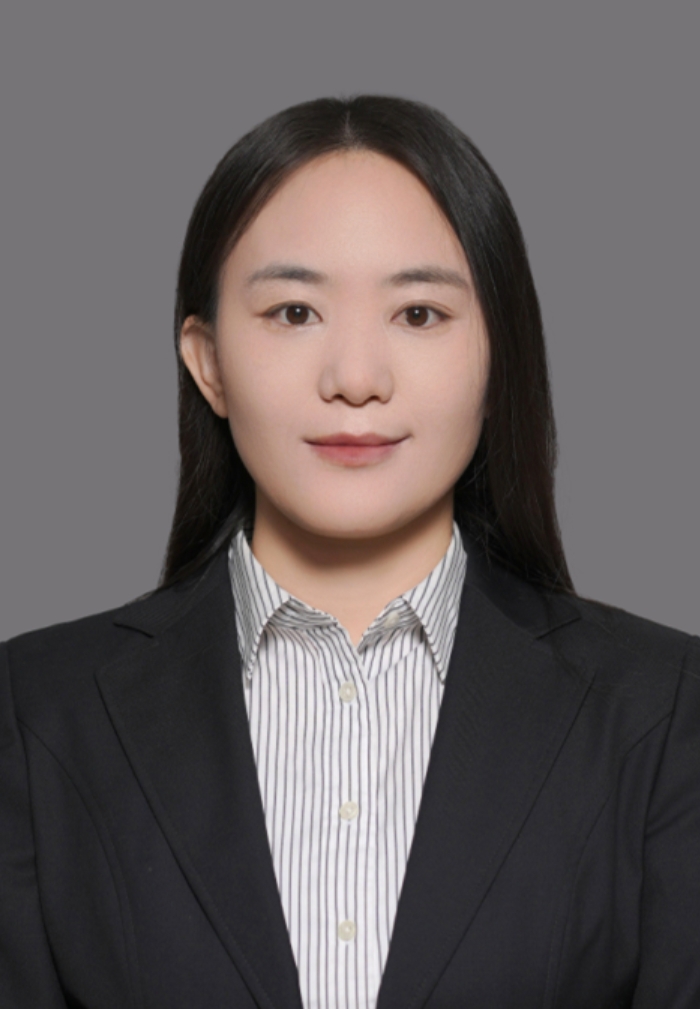Kunrong Mei——Associate Professor |
|
|
Nationality:
|
Chinese
|
|
Phone:
|
15022575215
|
|
Email:
|
kmei@tju.edu.cn
|
|
Office:
|
Room 417-2, Building 24, Tianjin University
|
|
School:
|
School of Pharmaceutical Science and Technology
|
|
ResearcherID:
|
|
|
Group weblink
|
|
Education Experience
| 2005-2009 | Bachelor of Engineering Bioinformatics | Huazhong University of Science and Technology |
| 2009-2014 | Doctor of Philosophy Structural Biology | Tsinghua University |
Professional Experience
| 2014-2019 | Postdoc | University of Pennsylvania |
| 2019- | Associate professor | Tianjin Univesity |
Research Area
Honors and Awards
Patents
Highlighted Publications
| 1. Liu, Y., Li, M., You, X., Ji, Q., and Mei, K. Advances in understanding the structure and function of the exocyst complex. Sci. Sin.-Vitae. 2022, 52, 95–106 |
| 2. Yao L, Zhang H, Liu Y, Ji Q, Xie J, Zhang R, Huang L, Mei K, Wang J, Gao W. Engineering of triterpene metabolism and overexpression of the lignin biosynthesis gene PAL promotes ginsenoside Rg3 accumulation in ginseng plant chassis. J Integr Plant Biol. 2022 Jun 22. doi: 10.1111/jipb.13315. Epub ahead of print. PMID: 35731022. |
| 3. Huang H, Ouyang Q, Mei K, Liu T, Sun Q, Liu W, Liu R. Acetylation of SCFD1 regulates SNARE complex formation and autophagosome-lysosome fusion. Autophagy. 2022 Apr 24:1-15. |
| 4. Mei K, Liu DA, Guo W. Determine the Function of the Exocyst in Vesicle Tethering by Ectopic Targeting. Methods Mol Biol. 2022;2473:65-77. |
| 5. Huang H, Ouyang Q, Zhu M, Yu H, Mei K, Liu R. mTOR-mediated phosphorylation of VAMP8 and SCFD1 regulates autophagosome maturation. Nat Commun. 2021 Nov 16;12(1):6622. |
| 6. Liu S, Fu Y, Mei K, Jiang Y, Sun X, Wang Y, Ren F, Jiang C, Meng L, Lu S, Qin Z, Dong C, Wang X, Chang Z, Yang S. A shedding soluble form of interleukin-17 receptor D exacerbates collagen-induced arthritis through facilitating TNF-α-dependent receptor clustering. Cell Mol Immunol. 2021 Aug;18(8):1883-1895. |
| 7. Mao, L., Zhan, Y.-Y., Wu, B., Yu, Q., Xu, L., Hong, X., Zhong, L., Mi, P., Xiao, L., Wang, X., Cao, H., Zhang, W., Chen, B., Xiang, J., Mei, K., Radhakrishnan, R., Guo, W., and Hu, T. ULK1 phosphorylates Exo70 to suppress breast cancer metastasis. Nat Commun. 2020, 11, 117 |
| 8. K. Mei and W. Guo. Exocytosis: A New Exocyst Movie. Current Biology, 2019, 29(1), R30-R32. |
| 9. K. Mei, P. Yue,and W. Guo. Analysis of the Role of Sec3 in SNARE Assembly and Membrane Fusion. SNAREs, 175-189. (Springer New York, 2019) |
| 10. K. Mei and W. Guo. The exocyst complex. Current Biology, 2018, 28(17), R922-R925. |
| 11. K. Mei*, Y. Li*, S. Wang, G. Shao, J. Wang, Y. Ding, G. Luo, P. Yue, J.-J. Liu, X. Wang, M.-Q. Dong, H.-W. Wang, and W. Guo. Cryo-EM Structure of the Exocyst Complex, Nature structural & molecular biology, 2018, 25(2):139-146. |
| 12. P. Yue*, Y. Zhang*, K. Mei, S. Wang, J. Lesigang, Y. Zhu, G. Dong, and W. Guo. Sec3 Promotes the Initial Binary T-Snare Complex Assembly and Membrane Fusion, Nature Communication, 2017, 8:14236. |
| 13. S. Tang, Y. Si, Z. Wang, K. Mei, X. Chen, J. Cheng, J. Zheng, and L. Liu. An Efficient One‐Pot Four‐Segment Condensation Method for Protein Chemical Synthesis, Angewandte Chemie International Edition, 2015, 54(19): 5713-5717. |
| 14. S. Yang*, Y. Wang*, K. Mei, S. Zhang, X. Sun, F. Ren, S. Liu, Z. Yang, X. Wang, Z. Qin, and Z. Chang. Tumor necrosis factor receptor 2 (TNFR2)· interleukin-17 receptor D (IL-17RD) heteromerization reveals a novel mechanism for NF-κB activation, Journal of Biological Chemistry, 2015, 290(2): 861-871. |
| 15. K. Mei*, Z. Jin*, F. Ren, Y. Wang, Z. Chang, and X. Wang. Structural Basis for the Recognition of RNA Polymerase II C-Terminal Domain by CREPT and p15RS, Science China Life Sciences, 2014, 57(1): 97-106. |
| 16. D. Wang, S. Zhang, L. Li, X. Liu, K. Mei, and X. Wang. Structural insights into the assembly and activation of IL-1 [beta] with its receptors, Nature immunology, 2010,11(10): 905-911. |




